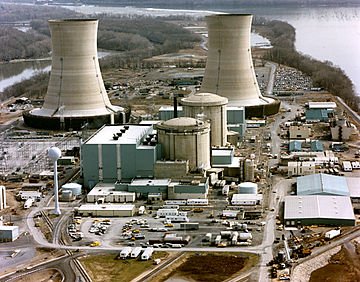Introduction
On March 28th, 1979, the United States was struck by a devastating nuclear accident at the Three Mile Island Nuclear Power Plant. This event, which resulted in a partial meltdown and the release of radioactive materials, remains one of the most significant incidents in the history of nuclear power. The Three Mile Island nuclear accident had far-reaching consequences, sparking debates on nuclear safety and leaving a lasting impact on the perception of nuclear energy.
The Three Mile Island Nuclear Power Plant
The Three Mile Island Nuclear Power Plant, located near Middletown, Pennsylvania, was a key component of the United States’ nuclear energy infrastructure. The plant consisted of two separate units, TMI-1 and TMI-2. TMI-1, which had been operational since 1974, was a pressurized water reactor that generated electricity for the region. TMI-2, on the other hand, was a newer reactor that had only been operational for a short time before the accident occurred.
The Accident
The incident at Three Mile Island began on the morning of March 28th, 1979, when a series of equipment malfunctions and operator errors led to a partial meltdown in the TMI-2 reactor. The reactor’s cooling system failed, causing the core to overheat and release a significant amount of radiation into the surrounding environment.
The initial response to the accident was marred by confusion and miscommunication. It took several hours for plant operators to fully understand the severity of the situation and to take appropriate action. As news of the incident spread, panic and fear gripped the nearby communities, leading to a mass evacuation of residents.
The Aftermath
The Three Mile Island nuclear accident had a profound impact on the perception of nuclear energy in the United States. It shattered the notion that nuclear power was infallible and raised serious concerns about the safety of nuclear reactors. The incident prompted a thorough investigation by the Nuclear Regulatory Commission (NRC) and led to significant changes in the regulation and oversight of the nuclear industry.
In the years following the accident, studies were conducted to assess the health effects of the radiation release. While no immediate deaths were attributed to the incident, there were concerns about long-term health consequences for the exposed population. The findings of these studies provided valuable insights into the risks associated with nuclear accidents and helped shape future safety protocols.
The Legacy
The Three Mile Island nuclear accident left a lasting legacy on the nuclear industry. It served as a wake-up call, highlighting the need for improved safety measures and emergency response protocols. The incident led to the development of advanced reactor designs and enhanced training programs for nuclear plant operators.
Furthermore, the accident sparked a public debate about the role of nuclear energy in the United States’ energy mix. Advocates argued that nuclear power was a clean and efficient source of energy, while opponents raised concerns about the potential for catastrophic accidents and the long-term storage of nuclear waste.
Today, the Three Mile Island Nuclear Power Plant is no longer operational. TMI-1, the undamaged reactor, continued to generate electricity until its closure in 2019. TMI-2, the reactor involved in the accident, was permanently shut down and is currently in the process of being decommissioned.
Conclusion
The Three Mile Island nuclear accident of 1979 was a pivotal moment in the history of nuclear power in the United States. It exposed the vulnerabilities of nuclear reactors and prompted significant changes in safety regulations. The incident served as a catalyst for ongoing debates about the risks and benefits of nuclear energy, shaping the future of the industry. While the Three Mile Island accident was a tragedy, it also served as a valuable lesson, ensuring that safety remains a top priority in the pursuit of nuclear power.
For more information about the Three Mile Island nuclear accident, you can refer to the following external references:
– [Nuclear Regulatory Commission (NRC)](https://www.nrc.gov/reading-rm/doc-collections/fact-sheets/3mile-isle.html)
– [Union of Concerned Scientists](https://www.ucsusa.org/resources/three-mile-island-accident)
– [World Nuclear Association](https://www.world-nuclear.org/information-library/safety-and-security/safety-of-plants/three-mile-island-accident.aspx)

